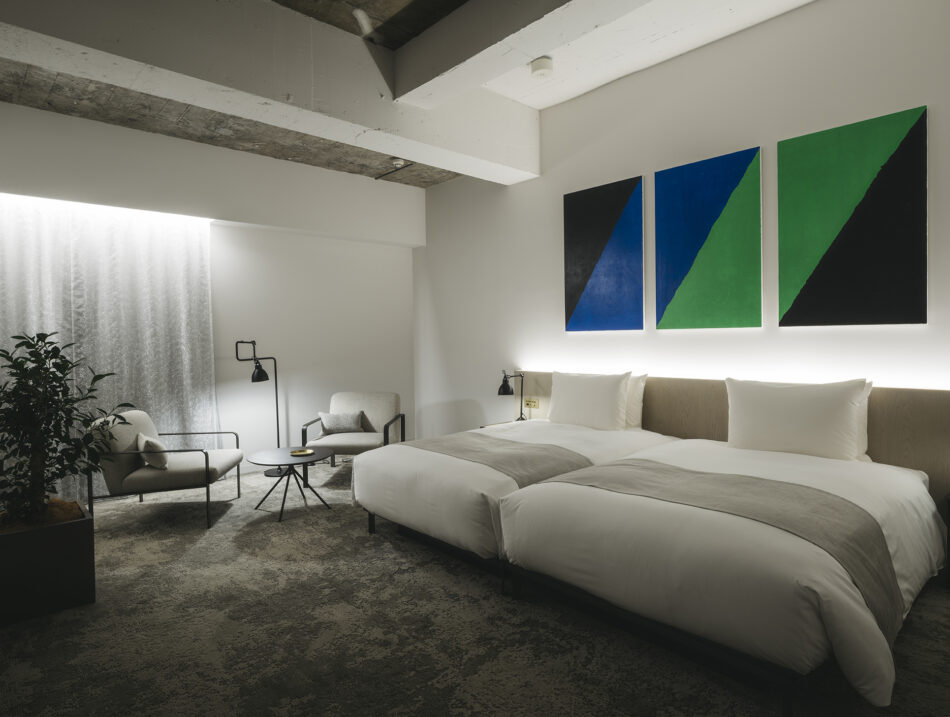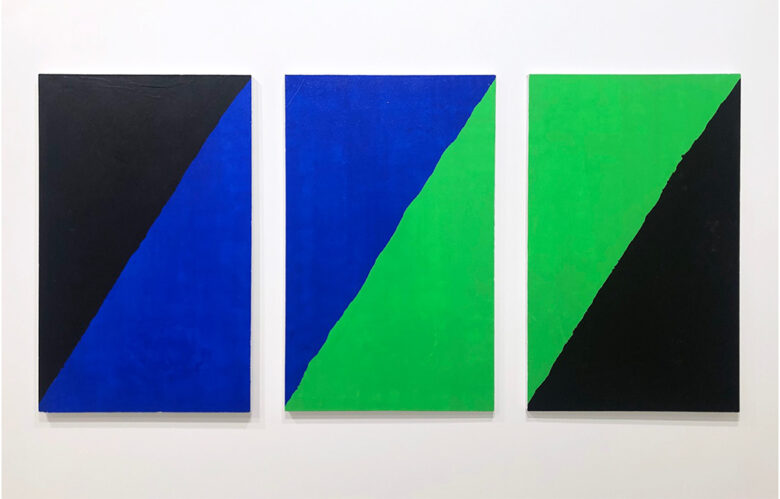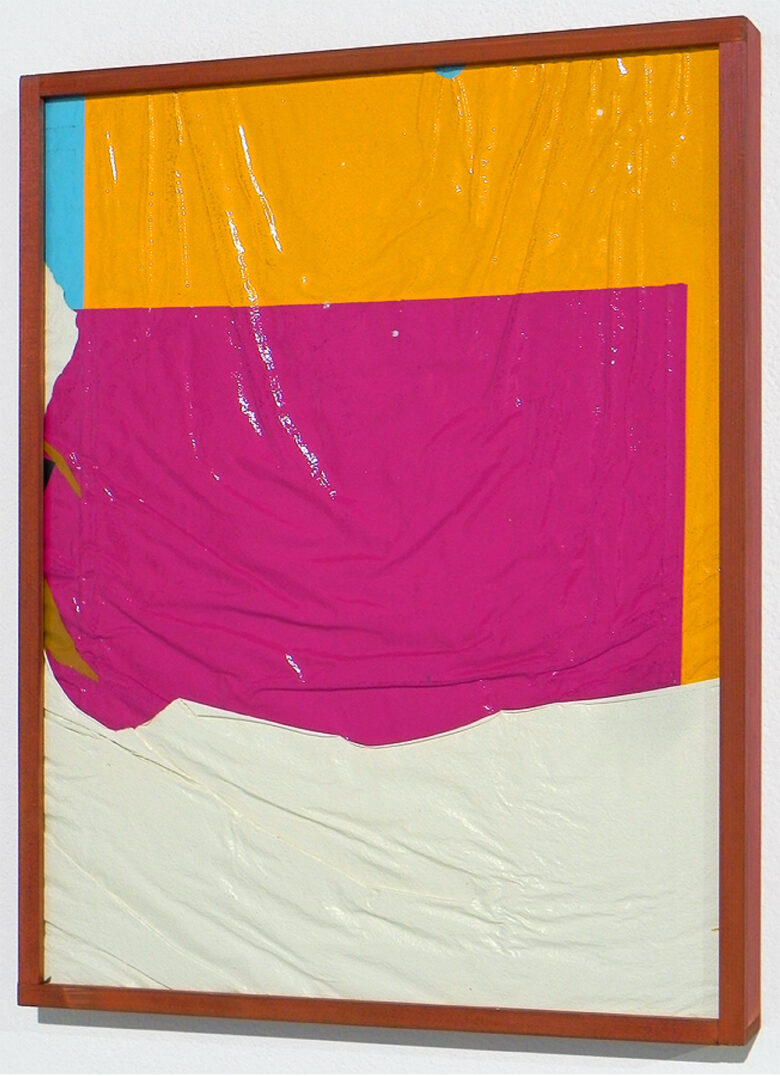ROOM 01 MASAHIRO SEKIGUCHI


Open Flag No. 1

Face from a Distance #4
Masahiro Sekiguchi was born in Tokyo in 1984. He graduated from the Oil Painting Course at Kyoto Seika University’s Faculty of Art in 2007. In 2012, he withdrew from a doctoral program in oil painting at Kyoto City University of Arts’ Graduate School of Arts.
His major solo exhibitions include reverse / revolve / repeat (Kodama Gallery, 2011), Warped (Kodama Gallery, 2017); project N 49 SEKIGUCHI Masahiro (Tokyo Opera City Art Gallery, 2012), and Blink of an Eye (Kodama Gallery, Tokyo, 2018). His major group exhibitions include LOCA2007 (Kyoto City University of Arts, 2007) and VOCA 2011: A Vision on Contemporary Art (Ueno Royal Museum, Tokyo, 2011).
Sekiguchi’s work begins by captivating the audience with bold hues and fields of colour. Each painting in Open Flag No. 1 combines vivid colours, presumably from unmixed paints, with the extremely minimal element of dividing the space in two diagonally. The colours used on adjacent screens overlap, creating a tricolored triptych that gives the impression of eternal repetition. Approaching the work reveals traces that appear to be accidental wrinkles in a homogenous texture like thin vinyl.
Despite the description “Oil on canvas”, one cannot but doubt whether these are truly “oil paintings”, as there are no brush strokes whatsoever revealing the painter’s hand. Nevertheless, Sekiguchi is consistently devoted to “Oil on canvas” in his work, one of its characteristics of which is the non-use of paintbrushes.Instead, he evenly spreads primary-coloured oil paints direct from the tube on resin plates, then peels the sheet of paint off while still half-dry and applies it to the canvas as a thin membrane.
The images may seem simple, but Sekiguchi creates a unique pictorial space through his technique of collaging torn paint, the physicality of the delicate act of handling paint as a membrane, and the characteristic strength imparted to the paint as a material through the peeling process, which can be recognised by examining the layers of paint membrane at the edges of the work. Sekiguchi’s fearless, ongoing challenge to the idea of “Oil on canvas” in the realm of painting, where every possible method has been employed since the rise of Abstract Expressionism began in the late 1940s, leads the viewer to the roots of painting itself.

